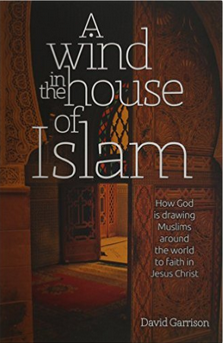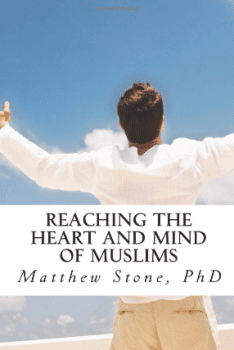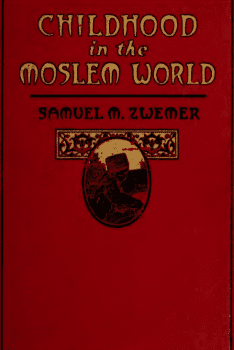Book Review: A Wind in the House of Islam
In his book, “A Wind in the House of Islam,” David Garrison seeks to understand and describe the people movements to Christ that are increasingly taking place throughout the Muslim world (6). According to Garrison, eighty-four percent of all the movements to Christ–defined as at least one thousand new believers or one hundred new churches within two decades–have taken place in the 21st century (226). Though Garrison admits that these movements represent a very small, “statistically almost insignificant” fraction of the Muslim world, he sees this recent development as a potential “hinge moment in history” (232) that may lead to the “Day of Salvation for Muslims” (252). In response to this new move of God in the Muslim world, Garrison aims to ascertain how God is bringing Muslims to faith in Christ (24). He hopes his study will equip the church to better participate in what God is doing, encourage Muslim converts, and inspire Christians to become more engaged in Muslim outreach (41). I will review this important study by briefly summarizing its contents and then seeking to assess its strengths and weaknesses in accomplishing Garrison’s aims.
Garrison begins with a historically rooted, descriptive study of movements from around the world that culminates in an evaluation of common themes that emerge. Through extensive interviews, he records first-hand accounts of forty-five movements (26) that include each of the nine “rooms” – or geographic regions – in the “House of Islam” (21). Together, these accounts serve to elucidate common features in this global phenomenon. In his final evaluation, Garrison highlights “ten bridges of God” that have driven these movements. They include faith, prayer, scripture, Holy Spirit activity, faithful Christian witnesses, learning from the body of Christ, communication, discovery, Islam itself, and indigenization (236-244). He also points to “five barriers to movements,” including contentious Christians, fear and hatred, imitating Islam, ignoring justice, and ignorance and apathy (246-251). In closing, he appeals to his Christian audience to respond to this window of opportunity (252-257).
Garrison’s study and subsequent analysis exhibit numerous strengths that allow it to yield significant insights into Muslim evangelism. Chief among them is his insistence on an initial phenomenological approach, his balance of diversity and common threads, and his illusory treatments of God’s use of the broader, diverse body of Christ in seeding today’s movements.
Garrison’s phenomenological approach, which delays assessment (31), yields significant insights into the unique expressions of faith in these movements (33). Rather than falling prey to the external categorization of cultural or religious systems, Garrison’s open and conversational interviews (25) allow him to benefit from self-descriptions that often include “unexpected” (61) and even dissonant (112-113) information. Most notably, this approach allows his study to unearth and highlight the importance of independent, Spirit-led, and scripture-steeped indigenization among Muslim peoples (212-213). As a result of these self-descriptions, Garrison learned that a recurring feature of this indigenized faith for believers from a Muslim background is a focus not on doctrinal points or historic practices but rather a faith that is centered on Jesus himself (59, 230) and a holy, transformed life (61). Those who engage in evangelism among Muslims are well served by following this example of listening openly and deeply in order to understand and helpfully respond to another, often very different, perspective.
Garrison’s approach also appropriately balances the diversity represented in the Muslim world (228) with the importance of broader understanding in assessing a global phenomenon with common threads (235). His regional focus brings to light significant contrasts within regions that are helpful for those seeking to engage Muslims living in – or originating from – these regions. The political and social repressiveness of the “Arab Room” (208), the brutality (183) and gender oppression within the “Western South Asian Room” (194), and the historic presence of militant Christians in the “West Africa Room” (167), just to name a few, point to the value of such an analysis. In this way, Garrison’s study not only provides resources for those who reach out to Muslims from various regions but also models holding broader themes in tension with Muslim diversity.
Finally, Garrison’s study benefits those seeking to engage in Muslim evangelism by unearthing the diverse roles that people of different backgrounds often play in collective witness to Muslims. His study highlights that, although foreign missionaries have had a role in these movements (210), so too have historic Christian communities within Islamic contexts (76, 128, 208-209) and, most critically, other Muslim background believers (212). This conclusion further supports Garrison’s argument that “contentious Christians” represent a significant barrier to Muslim movements (246). Christians seeking to reach out must be ready to work with and appreciate the contributions of one another. Whether in humbly learning from historic churches (240) or strategically stepping back to support and encourage fruitful indigenous witness (211), those who seek to engage in Muslim evangelism must do so with a broad view of the church and its role.
Though its strengths are many, “A Wind in the House of Islam” is not without its shortcomings. Although Garrison expresses a desire to encourage Christians toward loving engagement rather than fearful entrenchment, he repeatedly employs battle imagery in his book. Though such imagery may reflect the spiritual battle being waged in the Muslim world, describing new Christian fellowships as “beachheads” (17) and animists as caught in the balance between the two battling faith communities (160) plays to the audience more than it contributes to the stated goals of the book.
Garrison’s approach to these movements also suffers as a result of some of his other assumptions and commitments. While his regions are helpful, in places some of them seem artificially pressed into relevance with little real acknowledgment of the complex diversity that exists within them. Garrison also seems to be predisposed to uncritically accept the entirety of the first-hand accounts that necessarily form the basic information of his study. Although many of these are doubtlessly authentic and inspirational, they also emerge from very complex contexts that remain largely inaccessible to Garrison in the process of such an expansive study. Finally, while Garrison’s phenomenological approach yields a strong, diverse description, he never really transitions to his promised subsequent analysis (31). Instead, he offers a basic description of common threads while remaining largely silent on topics that are critical to his study and the very movements that are its object. For instance, his closing section on the “definition of conversion” (35-36) does little to address essential questions as to the legitimacy of “Christian” faith that does not freely and clearly acknowledge the divinity of Jesus (112-113).
However, these shortcomings in the end only mildly detract from what is an expansive, well-conceived, well-executed, and well-presented study on how Jesus is calling movements of people to himself from within the long-resistant peoples of the Muslim world. It must be acknowledged that in his stated goal of beginning a conversation on the themes it unearths (235), Garrison’s book is a clear success. His book provides invaluable material for further discussion on this weighty and controversial topic.




